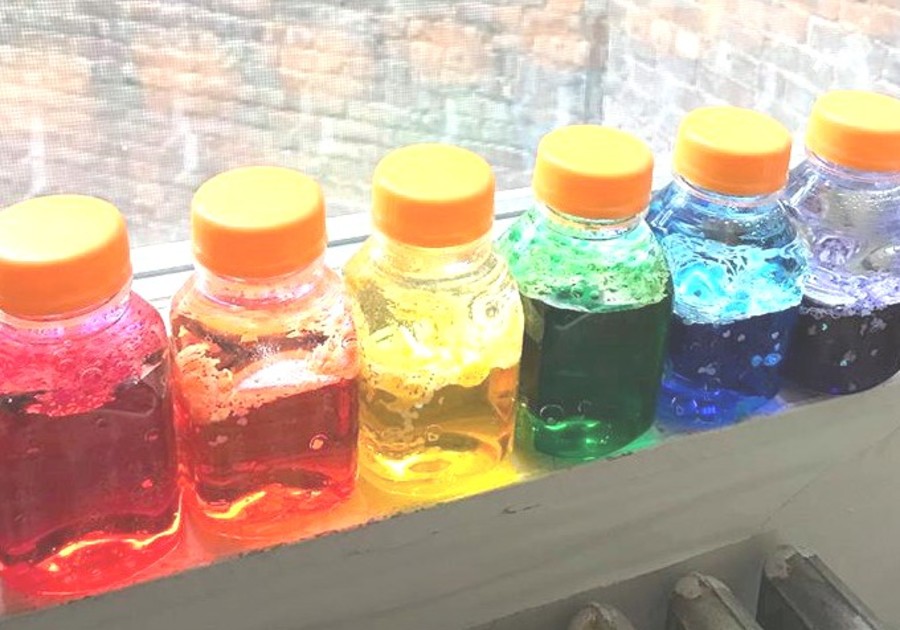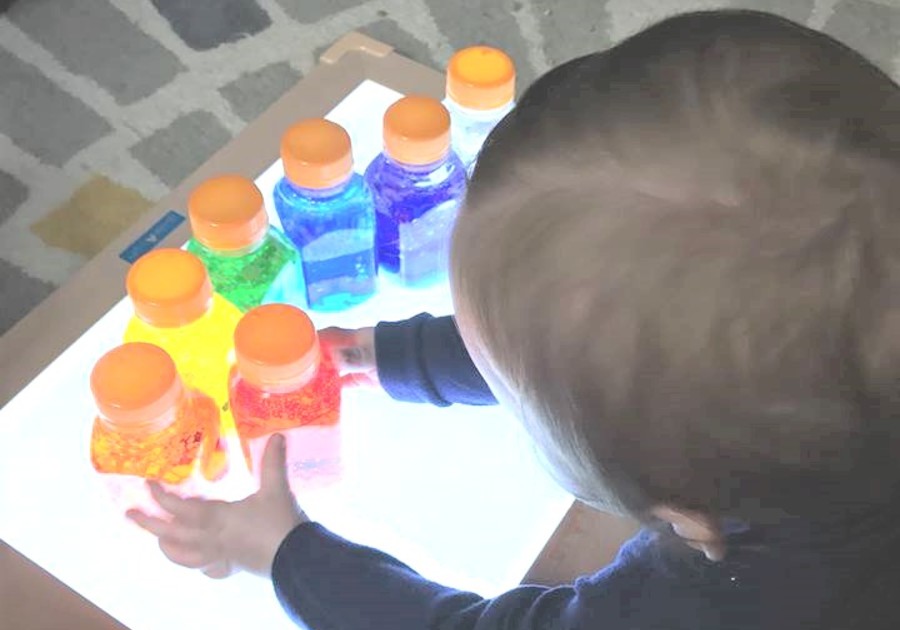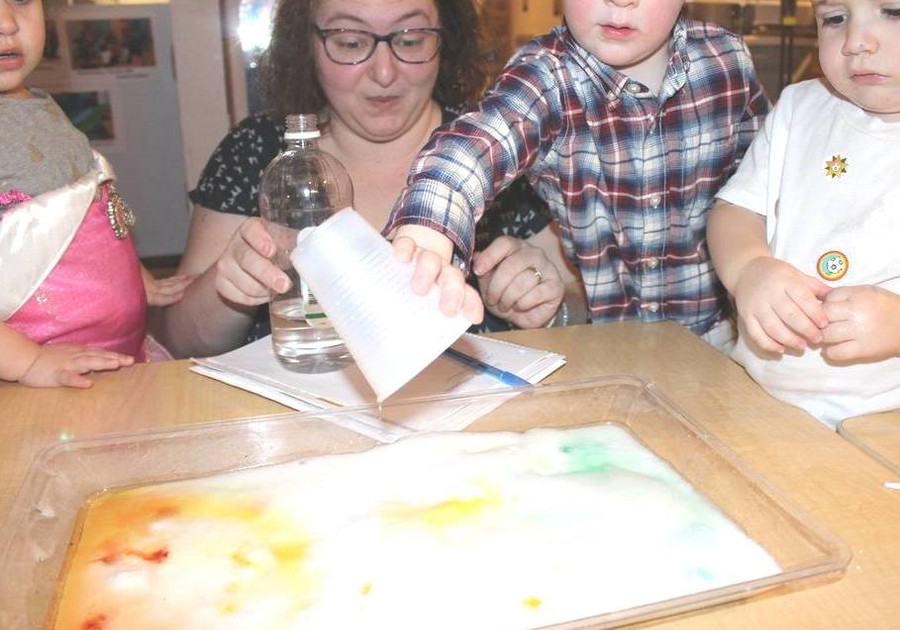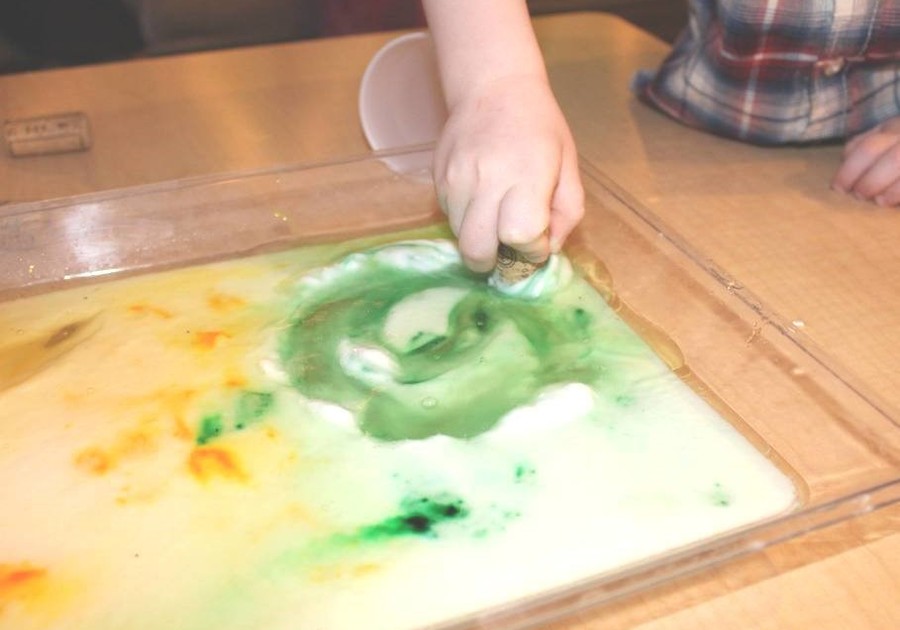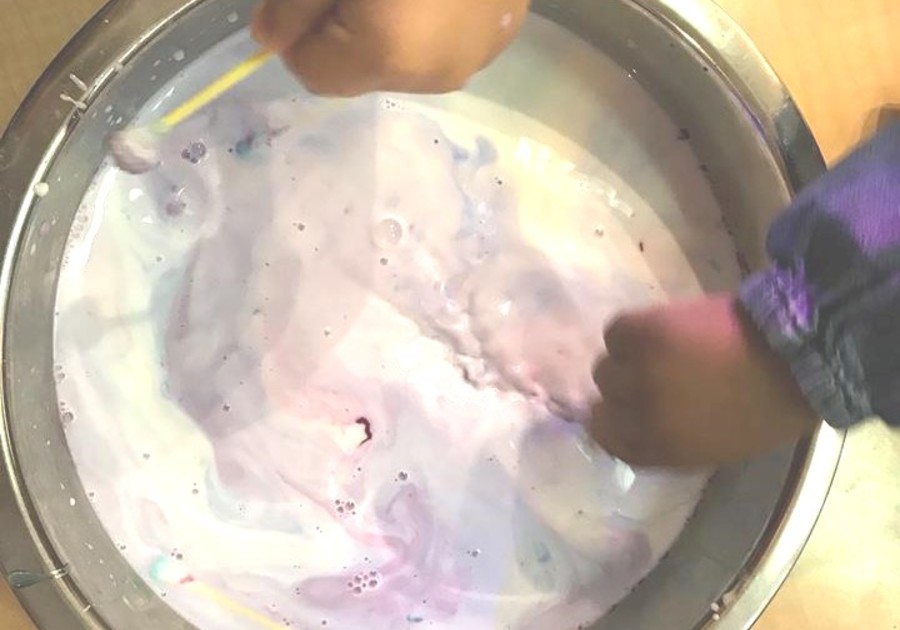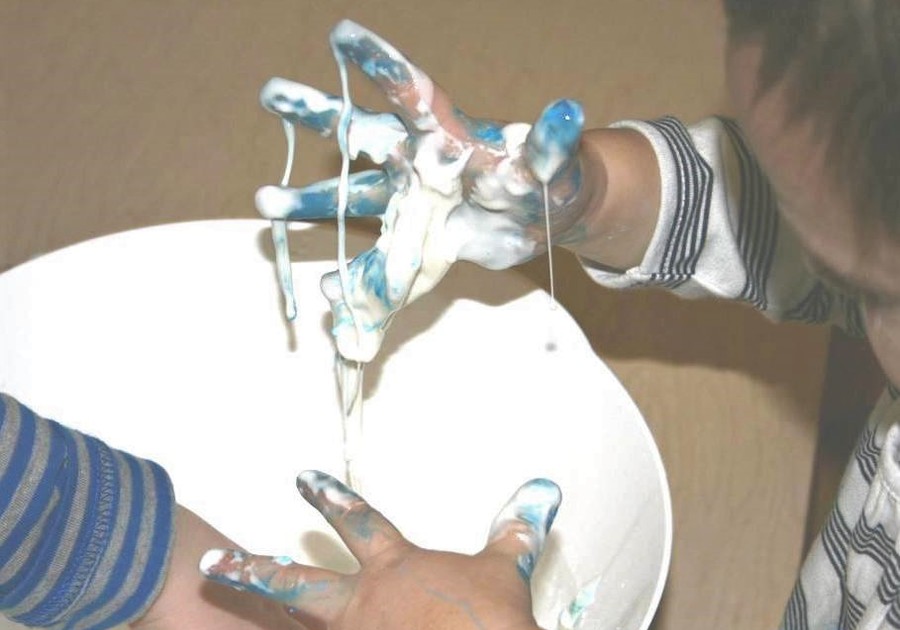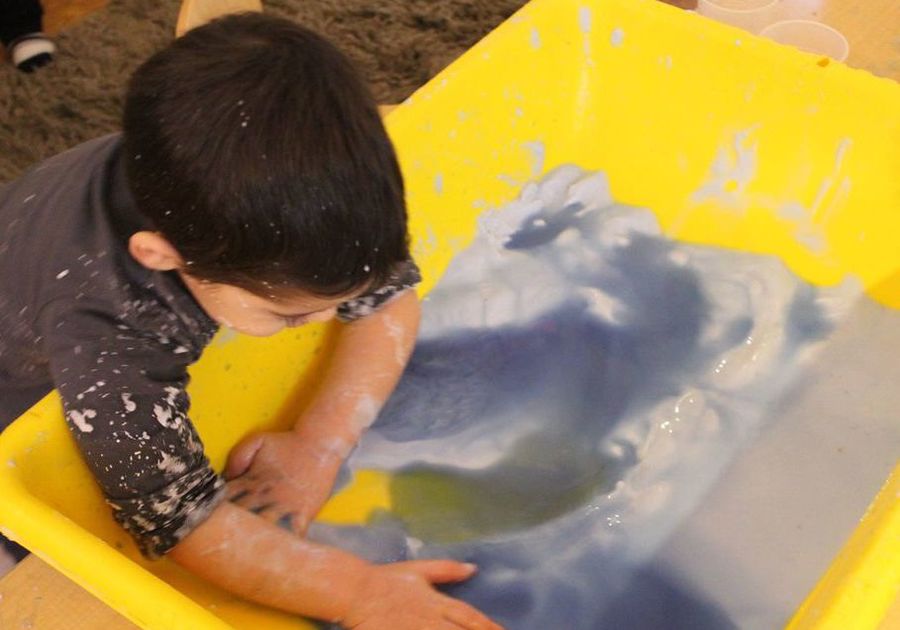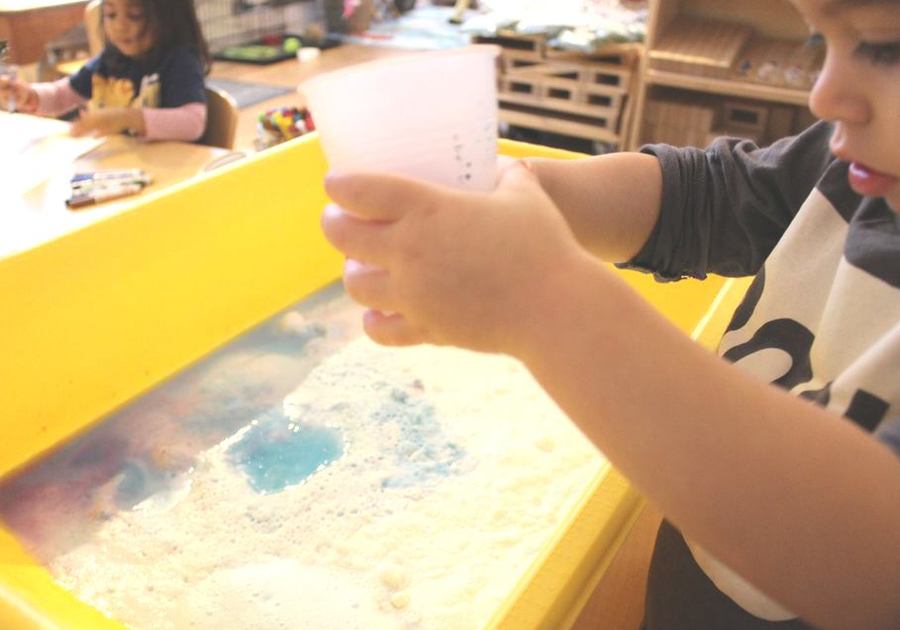We all know that science is important, but did you know how easy it is to start incorporating more science into your child’s play? Most science projects utilize ingredients that we all have stored in our kitchen cabinets, and the impact these simple science projects have on young children is priceless. Giving young children the opportunity to tinker and explore the natural world through these easy to set up experiments will build a foundation of love for science that will carry through into your child’s elementary years.
Let’s Make a Volcano erupt!
The quintessential science fair project from your own childhood: creating a chemical reaction with only baking soda and vinegar. There are many different ways to set up this science experiment, but the most basic is to simply have a baking sheet or tray underneath two bowls: one filled with baking soda, and one filled with vinegar. Pour the vinegar onto the baking soda and be amazed as bubbles and fizzes start gurgling up out of the bowl. You can switch up the container, freeze the baking soda, add food coloring, create a volcano with clay or paper-mache, use droppers instead of pouring, test out what happens if you use water or another liquid instead . . . the variables are endless!
Make sure to ask your child questions (and allow his or her answers to be left alone, don’t correct with the “real” answer- let there be magic and wonder. There’s plenty of time for the real science when they get older). Before you add the two elements together, allow your child to create a hypothesis about what will occur. Test it out and ask your child what they are smelling, seeing, hearing . . . an open dialogue will allow your young scientist to think about what is happening and start learning how to form predictions, lab notes, and analysis.
What are your little ones learning through the experiment? Cause and reaction. If I add this liquid to this solid, then I will witness bubbles and hear fizzing.
What is Non-Newtonian?
Another very basic experiment that will enthrall and surprise your child is a mixture of cornstarch and water. The resulting not quite solid and not quite liquid substance is also called “Oobleck” (and takes that name from a book by Dr. Seuss: Bartholomew and the Oobleck). Even while you are mixing the two together, you start to experience the unexpected. Usually, when you add a liquid and a powdery solid together, the powder dissolves and becomes easy to stir. Not so with cornstarch and water! It becomes very tricky to mix with a spoon. The concoction hardens when you stir, but if you stick your finger on it, it seems to melt away! The oobleck changes rapidly between a solid and liquid form based on the introduction of heat (little fingers!). It’s goopy, melty, able to be rolled into a ball (for a brief moment before melting) . . . it’s definitely something you’re going to want to use a tarp or mat for! When it dries it’s very easy to sweep and clean up.
What are your little ones learning through the experiment? The difference between solids and liquids, how applying pressure to a substance can change its behavior, and some fantastic vocabulary words!
They Just Don’t Mix
Save an old discarded plastic bottle or glass jar and break out some vegetable oil (or any oil, really) and water. Pour whatever amounts you’d like into the bottle (half and half, 75% and 25% . . .), and observe the two liquids repelling each other. The oil will break up into little balls and will float above the water. You may also want to add food coloring to the mix. If you have some Alka seltzer tabs, you can drop them in and create a lava lamp effect as it pushes the oil around in the water. There are many other items you can add to this experiment: buttons, beads, glitter.
What are your little ones learning through the experiment? Density, properties of water, separation. Also, gravity and sink/float if you are adding objects like buttons or beads. They are learning how to be keen observers, and how to use the world to find joy and wonder.
Bringing science into your home and daily activities don’t take a special budget or a lot of prep and set up. There are many experiments that will excite and delight your child that use items that you already have around your apartment. These are projects that your child will want to repeat again and again- they never get old. Every time I work on these projects, I still get that excited feeling in the pit of my stomach. I know the outcome, and it’s still just as thrilling as the first time I saw the science in action. 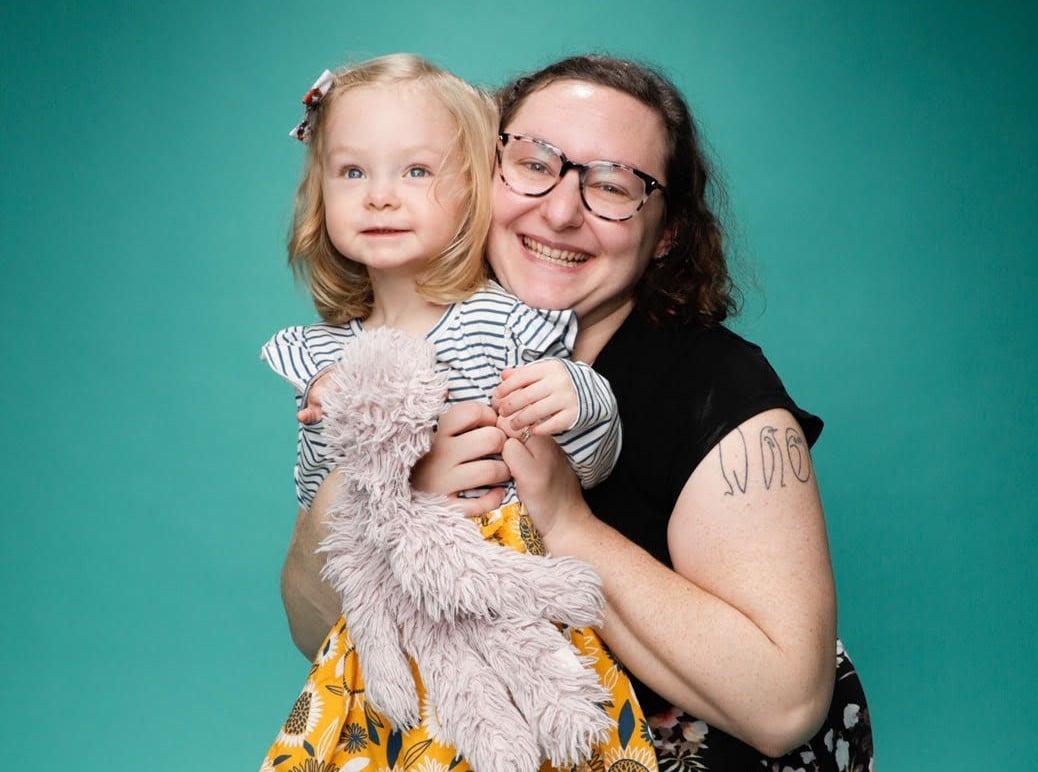
Rachel McMinn is an early childhood educator at Buckle My School Preschool in Tribeca, who has taught the young 2-year-olds for almost ten years. She holds a Masters in Early Childhood Education from Hunter College and a Writing degree from Pratt Institute. She lives in Brooklyn with her infant daughter, post-production & screenwriting husband, and two attention-seeking cats.
Buckle My Shoe | Facebook | Instagram
Related articles:
 | 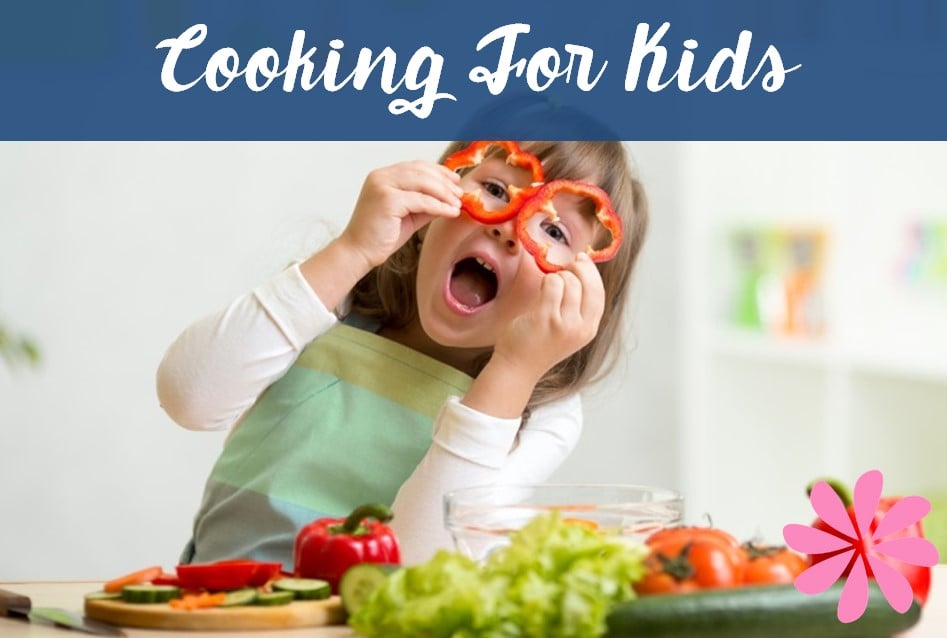 |  |
Macaroni KID Lower Manhattan is the family fun go-to source for the latest and most comprehensive information in our area. Subscribe for FREE today.

